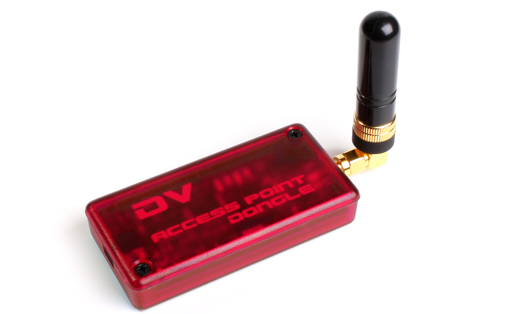Kansas City is a Yaesu Fusion town. No two ways about it. And can we stop for a second and recognize how internet-based radio has changed over the past ten to fifteen years (twenty)? Seems like yesterday when IRLP was all the rage. Then the upstart Echolink came in, which never really felt like radio because of being able to use a computer to talk. Kenwood’s TM-D710A rig went whole hog with their integration of Echolink into that radio. IRLP felt more real because you used radios – plus it was based in a linux variant. Then the rise of D-Star and Yaesu’s Fusion. Raspberry Pi-s and Allstar nodes. Cats sleeping with dogs. Things got complicated.
Way back when, I was stationed in Korea and as an additional way to get on the air I got an Icom IC-92AD along with a DVAP that allowed me to use D-Stars. The HT was of a nice solid construction, metal not plastic… very rugged. D-Stars had poor quality audio, until you got used to it… and compared to IRLP or Echolink.
I still have an EchoIRLP node. Seems like a bit of an antique these days. A gentlemen from Long Island connected to the node a while back, explaining that the IRLP node on their repeater system had been down for a couple of years and they had just repaired it. He was curious where all the IRLP traffic was? That is a good question. There is still activity with the East Coast Reflector. Not sure how those folks on the west coast WIN System are doing.
Another interesting phenomenon is the geographical segmentation of D-Star and Yaesu’s Fusion. I will be honest in admitting I have a hard time defining the difference between Fusion, Wires-X, YSF, and C4FM. But that’s another discussion. Interestingly enough, some towns are D-Star and some are Fusion. I am not sure if that is because either Yaesu or Icom donated the components to different repeater owners or if there is another explanation.
Kansas City is a Fusion town. I noticed it first with a local UHF repeater. I am not a big net guy, but I enjoy, at times, monitoring the repeaters and reading the mail. One day when I went to check the local UHF repeater, it was just digital hash. Lo and behold, they’d gone Fusion. Hmm. A little more investigating showed that many more repeaters around the greater Kansas City metropolitan area had also gone Fusion.
It was time to ditch the Icom HT. A recent Kansas City hamfest gave me the opportunity where I was able to find a home for my lightly used IC-92AD (with DVAP, extra batteries, and a drop-in charging cradle). And now I am the proud owner of a Yaesu FT5D… still trying to figure out the ends and outs. Similar to the DVAP, I got a pi-star “hotspot” that allows me some flexibility of connecting to both repeaters as well as… other “linked” nodes. Sometimes they are called “rooms” and sometimes they are called other names. Still figuring it out. I have a Wires-X button that seems to offer some additional functionality. Need to learn more about that.
Having the new HT has motivated me to check into that local net on a slightly more regular basis. We’ll see what becomes of Yaesu’s Fusion…. will it enjoy a similar rise and fall like IRLP or will it continue to grow?







